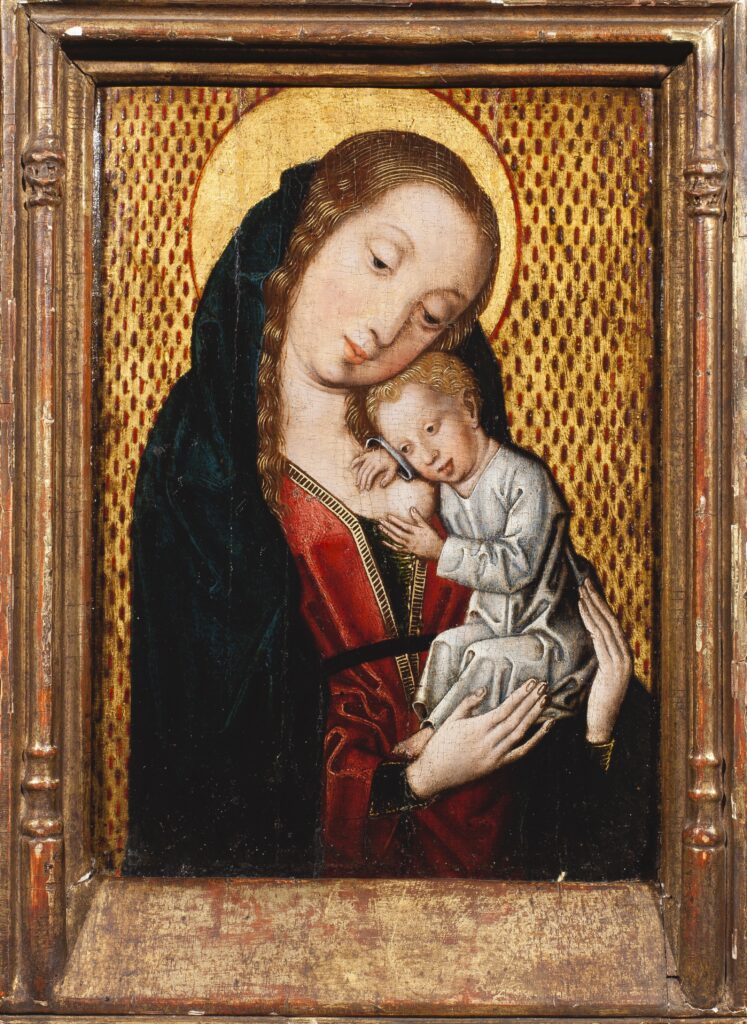Master of the Gold Brocade
active c. 1500
The Virgin nursing the Christ Child, Maria lactans

Medium:
Oil on Panel
Category:
Dimensions:
21.5(h) x 15(w) cms
Framed Dimensions:
27(h) x 19.5(w) cms
Essay:
Scholars have yet to fully identify The Master of the Gold Brocade who, along with his workshop, was catalogued under this moniker by Max J. Friedländer in the 1960s. The artist hailed most likely from Bruges, although influences from Brussels and Ghent also permeate his work.
The image of the Holy Virgin nursing the Christ Child was the most typical subject matter of the painter, whose rare paintings have been occasionally recorded on the market and are also to be found in a number of museum's collections. Generally referred to as the 'Maria lactans', this devotional type was commonplace during the last decades of the 15th Century, having evolved from Rogier van der Weyden's 'Saint Luke Drawing the Virgin' (now in the Museum of Fine Arts, Boston). Dirck De Vos states in his catalogue raisonné on van der Weyden that this masterpiece could be seen and admired either in the Cathedral of St Gudule, Brussels, where the city's Painters Guild members worshipped, or in the guild house itself. The sheer genius of this inspirational painting combined with its accessibility would account for the popularity of this subject among artists of the time.
This tender scene with its elaborately executed gold patterned background is a most beautiful example of the Virgin and Christ Child genre. The artist has compressed the composition to great effect, enhancing the sense of intimacy between the two tightly entwined figures, the curve of the Madonna's hands gently enfolding her infant and her head protectively lowered towards him.
A stylistically comparable work is the Maria lactans in the collection of the Musée des Beaux Arts, Dijon, France.
Dr. Hélène Mund has confirmed the attribution to the Master of the Gold Brocade, based on first hand examination of the work.
Provenance:
Collection of Charles Oulmont, Paris, circa 1913;
Private Collection, Switzerland
Literature:
RKD/Friedlaender 1966, 6/38, C3382